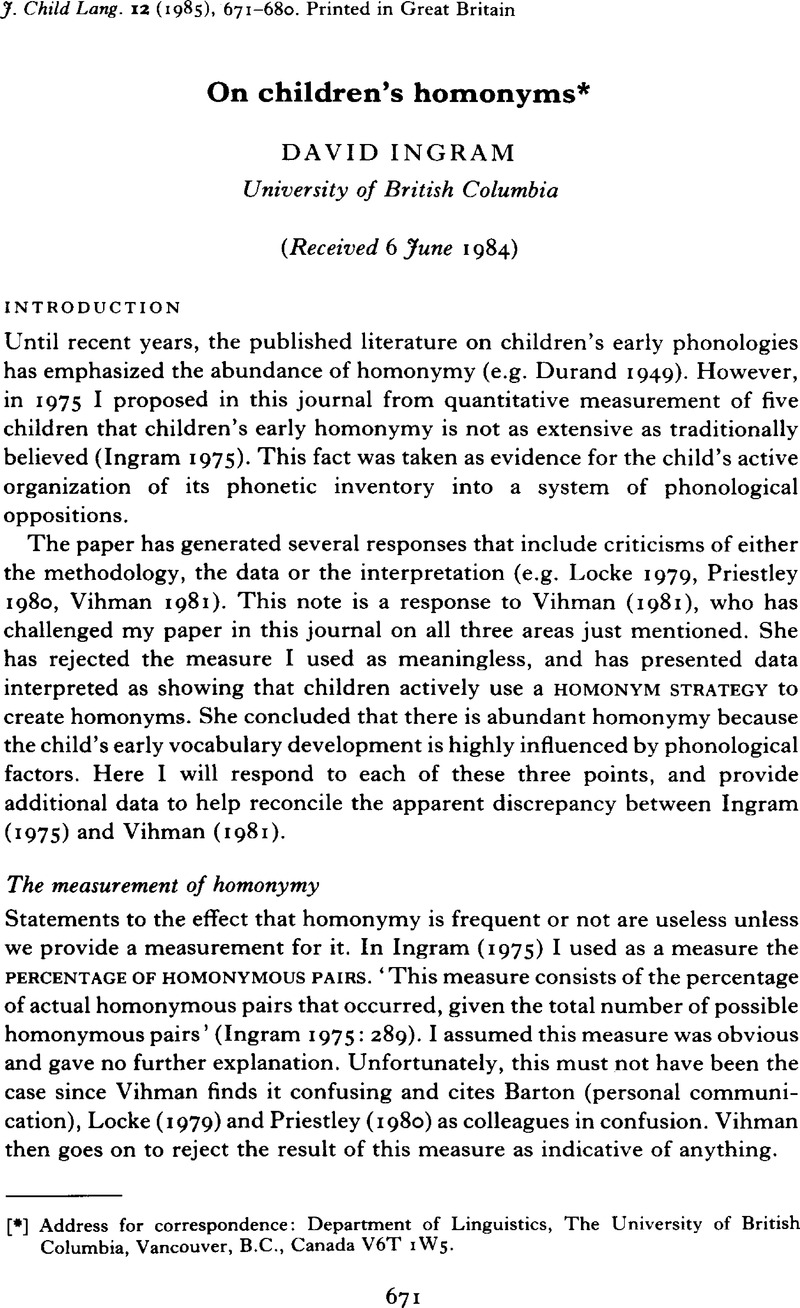Crossref Citations
This article has been cited by the following publications. This list is generated based on data provided by Crossref.
Goad, Heather
and
Ingram, David
1987.
Individual variation and its relevance to a theory of phonological acquisition.
Journal of Child Language,
Vol. 14,
Issue. 3,
p.
419.
Lleó, Conxita
1990.
Homonymy and reduplication: on the extended availability of two strategies in phonological acquisition.
Journal of Child Language,
Vol. 17,
Issue. 2,
p.
267.
Forrester, Michael A.
and
Pike, Christopher D.
1998.
Children's comprehension of polysemous estimation words and phrases.
First Language,
Vol. 18,
Issue. 53,
p.
185.
Ingram, David
and
Ingram, Kelly D.
2001.
A Whole-Word Approach to Phonological Analysis and Intervention.
Language, Speech, and Hearing Services in Schools,
Vol. 32,
Issue. 4,
p.
271.
McLeod, Sharynne
Doorn, Jan van
and
Reed, Vicki A.
2001.
Normal Acquisition of Consonant Clusters.
American Journal of Speech-Language Pathology,
Vol. 10,
Issue. 2,
p.
99.
Burrows, Lauren
and
Goldstein, Brian A.
2010.
Whole word measures in bilingual children with speech sound disorders.
Clinical Linguistics & Phonetics,
Vol. 24,
Issue. 4-5,
p.
357.
Pye, Clifton
Berthiaume, Scott
and
Pfeiler, Barbara
2020.
Northern Pame-Spanish language acquisition in the context of incipient language loss.
International Journal of Bilingualism,
Vol. 24,
Issue. 2,
p.
246.
Mashaqba, Bassil M.
Al-Shdifat, Khalid
Al huneety, Anas I.
Abu Guba, Mohammad Nour
and
Abdelhadi, Hadeel
2025.
Phonological whole-word measures in bilingual Arabic-English speaking children.
International Journal of Bilingual Education and Bilingualism,
Vol. 28,
Issue. 2,
p.
182.



